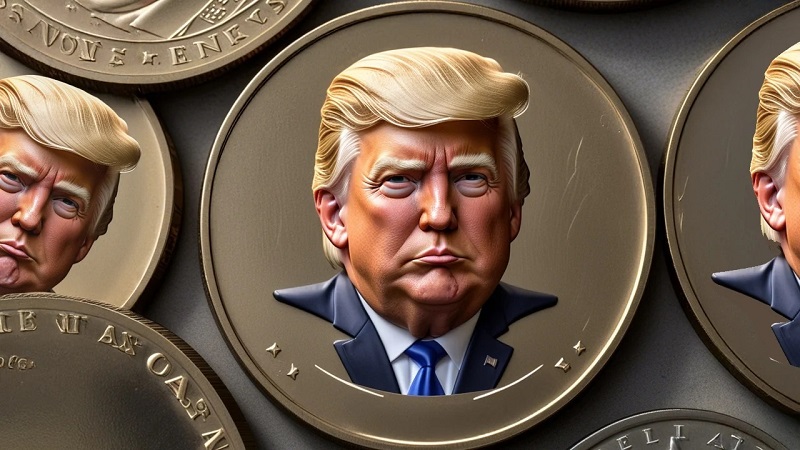Donald Trump’s $TRUMP meme coin has disrupted both crypto and political landscapes, amassing an $8 billion market cap within hours.
Marketed as a political statement, this Solana-based token highlights Trump’s pro-crypto stance while sparking debates on meme coins’ legitimacy and the future of cryptocurrency regulation.
Content Highlights
- Launch Announcement: Trump introduces $TRUMP meme coin, leveraging Truth Social and X.
- Market Impact: $8 billion market cap within hours; rapid adoption reflects meme coin craze.
- Political Implications: Aligns with Trump’s pro-crypto agenda and appointees advocating blockchain tech.
- Controversies: Questions on regulatory oversight, market manipulation, and authenticity of promotion.
- Future Outlook: Potential for greater cryptocurrency adoption; calls for clearer regulations.

President-elect Donald Trump has once again captured global attention, this time by launching a Solana-based cryptocurrency named $TRUMP.
Within hours of its announcement, the token reached a staggering market capitalization of $8 billion, making waves in both the political and cryptocurrency worlds.
A Statement Beyond Investment
Promoted extensively through Truth Social and X (formerly Twitter), the $TRUMP coin is described as more than just a financial asset—it’s a political statement.
Trump’s team positions the token as a way for supporters and critics to engage with his brand in a new, digital frontier.
Unlike traditional investments, purchasing $TRUMP comes with unique stipulations.
Buyers must agree to terms that include waiving the right to participate in class-action lawsuits unless they opt out within 30 days.
These unconventional conditions highlight the coin’s dual purpose as both a cultural phenomenon and a reflection of Trump’s disruptive approach to politics and business.
Building on a Digital Legacy
The success of Trump’s previous ventures, such as his record-breaking NFT collections, has set the stage for this ambitious leap into cryptocurrency.
These digital assets generated millions in sales, reinforcing Trump’s ability to blend branding with innovation.
However, the $TRUMP coin also raises questions about the legitimacy and long-term impact of politically themed cryptocurrencies.
Pioneering a Pro-Crypto Administration
The launch of $TRUMP signals a broader shift in Trump’s economic and technological policies.
His administration’s pro-crypto stance is evident in key appointments, such as David Sacks as White House AI and Crypto Czar and Paul Atkins as the nominee for SEC Chair.
These moves suggest a significant pivot toward embracing blockchain technology and increasing regulatory clarity for digital assets.
Skepticism Amid Enthusiasm
While $TRUMP’s meteoric rise has captured widespread interest, it has not escaped controversy.
Critics express concerns about the lack of regulatory oversight for meme coins, with some questioning the authenticity of promotional materials circulating on social media.
Despite these challenges, the coin’s rapid ascent reflects the growing appeal of meme coins as a cultural phenomenon fueled by speculative trading and online communities.
A New Chapter for Cryptocurrency?
The $TRUMP coin represents a potential turning point for the crypto industry, tying a meme coin to a high-profile political figure.
This move could encourage broader adoption of digital assets while spotlighting the urgent need for clearer consumer protections and regulatory frameworks.
For Trump supporters, the token exemplifies the innovative possibilities of blockchain technology.
For skeptics, it underscores the speculative and often volatile nature of meme coins.
The Road Ahead
As President-elect Trump prepares to take office, the $TRUMP coin may serve as a bellwether for his administration’s approach to cryptocurrency and innovation.
Whether it becomes a lasting symbol of his political brand or faces regulatory scrutiny remains uncertain.
One thing is clear: the $TRUMP coin has already made its mark as a bold, headline-grabbing entry into the digital age, sparking conversations about the intersection of technology, politics, and culture.